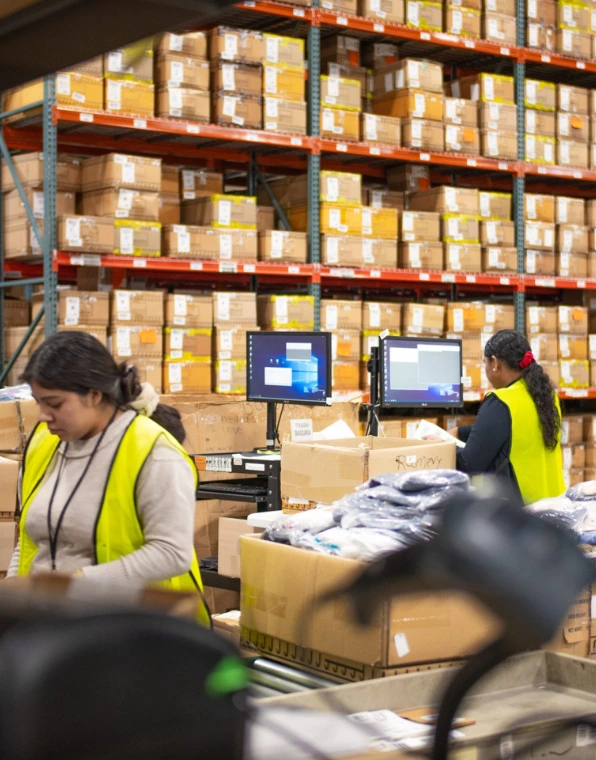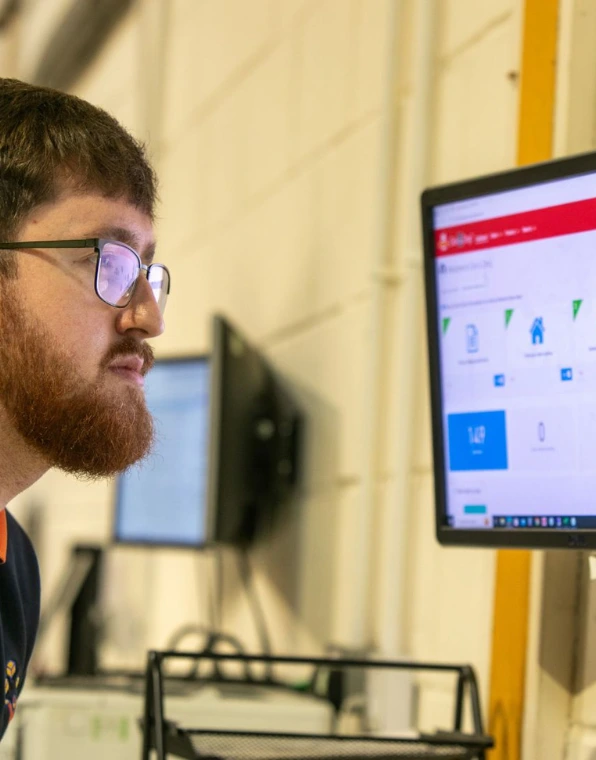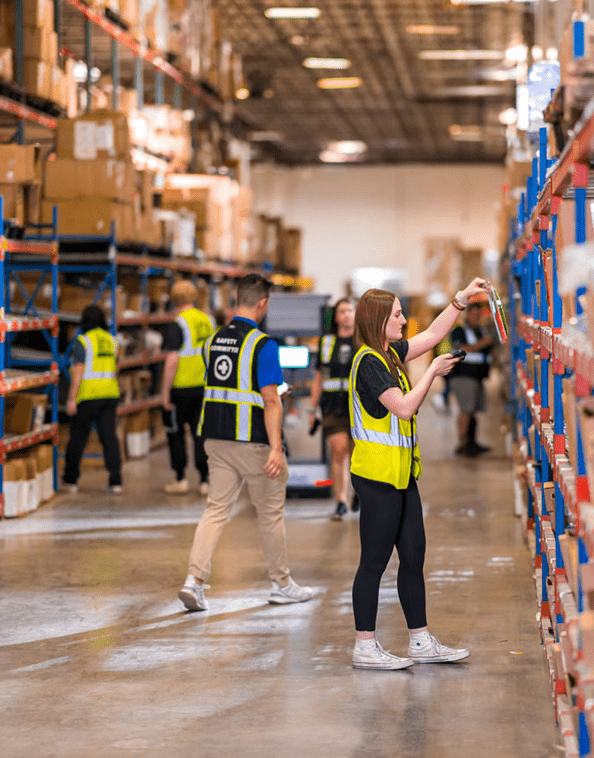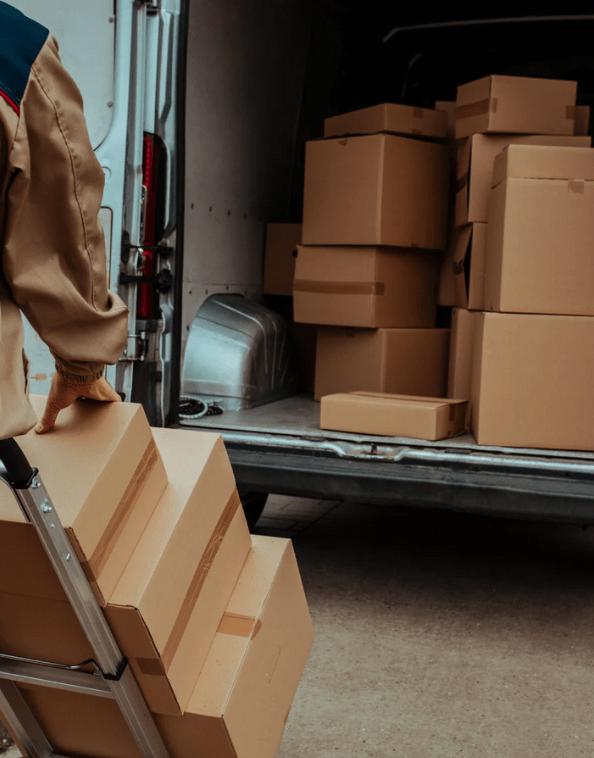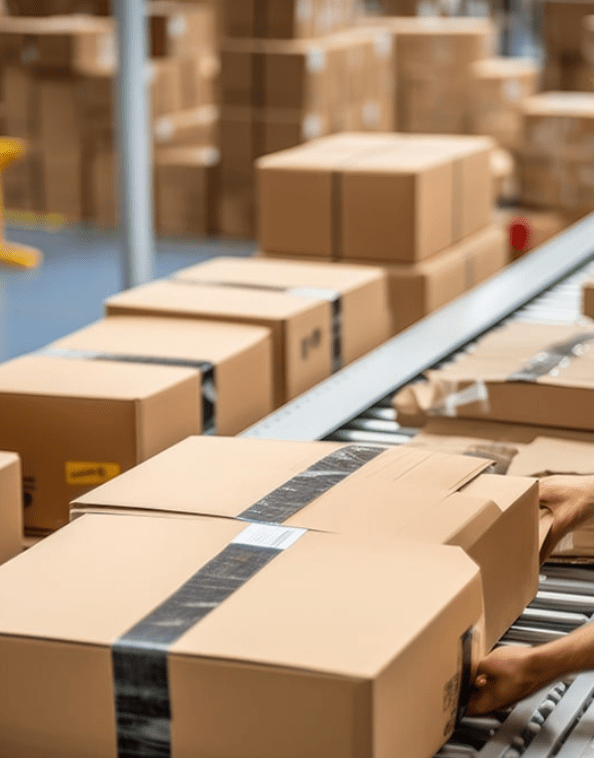Introduction: Why Switching 3PL Providers Matters More Than Ever
If you’ve been considering switching 3PL providers, the new year is the perfect time to make the move. For eCommerce brands, logistics performance defines everything — from customer satisfaction to profit margins. When your current provider can’t keep up with demand, lacks technology, or causes fulfillment headaches, it’s time for a change.
Making the switch might sound overwhelming, but it doesn’t have to be. This complete 2026 guide from FulfillMe breaks down every step: recognizing when it’s time to move on, choosing the right replacement, and executing a seamless transition without operational chaos.
Whether your goal is faster shipping, better scalability, or stronger technology, switching 3PL providers can be the smartest decision your business makes this year.
Why More Businesses Are Switching 3PL Providers in 2026
The logistics landscape is evolving fast. Automation, data-driven insights, and customer expectations for speed and accuracy have raised the bar for every fulfillment operation. Yet many brands are still working with outdated providers who haven’t evolved.
In 2026, eCommerce leaders are prioritizing logistics partners that offer:
Real-time tracking and visibility
Automated inventory management
Integrated systems for multi-channel fulfillment
Scalable storage and shipping
Transparent pricing and proactive support
If your current provider isn’t delivering these capabilities, it’s not just an inconvenience — it’s a competitive disadvantage.
5 Signs It’s Time to Switch Your 3PL Provider
Knowing when to switch is the first step toward improvement. Here are five clear warning signs that your current 3PL is holding your business back.
1. Poor Service Quality
Late shipments, inaccurate orders, or damaged goods create ripple effects across your customer base. When fulfillment issues start costing you sales or reviews, it’s a signal your 3PL can no longer protect your brand reputation.
2. Lack of Scalability
A great logistics partner scales with you. If your provider struggles during busy seasons or major sales events, they’re not equipped for growth. Your 3PL should easily adapt to fluctuations without impacting delivery times or accuracy.
3. Outdated Technology
Fulfillment is now a data-driven business. If your 3PL still relies on manual reporting, can’t integrate with Shopify or Amazon, or doesn’t offer real-time updates, your operations will suffer. Technology should enhance visibility, not limit it.
4. Rising Costs Without Added Value
When costs increase but service quality doesn’t, it’s time to reassess. Transparent pricing and measurable results are the standard. If your provider can’t justify rising rates, it’s a red flag.
5. Frequent Customer Complaints
Negative reviews about late deliveries or incorrect orders are often symptoms of deeper logistics problems. The longer you stay with a failing 3PL, the more brand trust you lose.
Recognizing these signs early allows you to take proactive steps before your operations — or your customer experience — are compromised.
The Best Time to Switch 3PL Providers
Timing is everything in logistics. Choosing the right moment for your transition can prevent disruptions and ensure a smoother switch.
Avoid Peak Seasons
Never change 3PLs during your busiest months or major sales events. High order volumes amplify small issues into major setbacks. Instead, schedule your transition during slower periods when you can afford a learning curve.
Align with Inventory Cycles
Plan your switch when inventory levels are naturally low or a restock is already scheduled. This avoids unnecessary double-handling and minimizes tracking errors.
Build a Clear Transition Timeline
Work closely with your new provider to create a detailed plan. Map out every stage — from inventory transfer and software integration to testing and full launch. A well-planned schedule is the foundation of a seamless switch.
4 Steps to a Smooth 3PL Transition
Switching 3PL providers is a strategic process. Here’s how to make it efficient, predictable, and disruption-free.
Step 1: Assess and Define Your Needs
Before you choose a new provider, clarify your expectations.
Inventory and Growth Goals: Estimate your fulfillment volume and projected growth.
Required Services: Identify must-have offerings such as FBA prep, kitting, subscription box fulfillment, or returns handling.
Distribution Reach: Choose a provider with warehouse locations that align with your target markets.
Step 2: Evaluate Potential Partners
Finding the right partner requires research and comparison.
Technology: Look for advanced WMS (warehouse management systems) and integrations with your eCommerce platform.
Scalability: Ensure the provider can grow alongside your business.
Sustainability: Consider providers that use recyclable packaging or carbon-neutral shipping if sustainability is part of your brand promise.
Step 3: Develop a Detailed Transition Plan
A clear plan reduces the risk of mistakes.
Set Timelines: Assign tasks to your internal team and the new 3PL.
Organize Inventory: Label and verify your stock before shipping it to the new facility.
Confirm Data Accuracy: Double-check SKUs, order data, and system connections.
Step 4: Test Before Going Live
Start small. Run a pilot with limited SKUs or a specific region to ensure everything functions correctly. Once the pilot succeeds, scale gradually to full capacity.
Managing Communication During the Switch
Transparent communication makes the transition smoother for everyone — from your internal team to your end customers.
Inform Your Team Early
Explain the reasons for switching and how it benefits the company. Clear direction prevents confusion and ensures all departments are aligned.
Keep Customers Updated
If small delays are possible during the changeover, communicate proactively. Transparency builds trust and lets customers know improvements are coming.
Coordinate Between Providers
Facilitate communication between your outgoing and incoming 3PLs. Shared visibility on inventory, tracking data, and schedules minimizes service disruptions.
3 Common Mistakes to Avoid When Switching 3PLs
Even well-planned transitions can go wrong if these common pitfalls aren’t avoided.
1. Poor Data Synchronization
Mismatched inventory data can lead to lost products, delayed orders, and frustrated customers.
Fix: Audit all product data and SKUs before transferring. Test integrations between your systems and the new 3PL’s WMS.
2. Overlooking Hidden Costs
Setup fees, integration charges, and return handling costs can sneak into contracts.
Fix: Request full pricing transparency and compare multiple providers before signing.
3. Skipping System Testing
Skipping a pilot phase is one of the biggest risks in switching 3PLs.
Fix: Run a controlled test period before going live to validate integrations, carrier relationships, and fulfillment accuracy.
How to Measure Success After Switching 3PL Providers
Once your new 3PL is up and running, tracking performance is key to ensuring long-term success. Data gives you a clear picture of whether your decision is paying off.
Key KPIs to Monitor
Fulfillment Accuracy: Are orders being shipped correctly and on time?
Delivery Speed: How quickly are packages reaching customers?
Inventory Accuracy: Are real-time counts matching physical stock?
Return Processing: How efficiently are returns handled?
Cost per Order: Are logistics costs decreasing as efficiency improves?
Tools That Help Track Performance
Warehouse Management Systems (WMS): Platforms like Logiwa or ShipHero give real-time visibility.
Transportation Management Systems (TMS): Tools such as FreightPOP optimize delivery routes.
Analytics Dashboards: Systems like Power BI consolidate KPIs into one clear view.
By consistently monitoring these KPIs, you’ll know if your 3PL partnership is performing at the level your business requires.
Why Dedicated Account Management Matters
A strong 3PL relationship isn’t built on technology alone — it’s supported by people who understand your business.
Proactive Problem-Solving
An experienced account manager monitors operations daily, anticipating potential disruptions and addressing them before they affect orders or customers.
Tailored Processes
Your account manager ensures fulfillment aligns with your unique workflows — from packaging and branding to subscription schedules and promotional spikes.
Consistent Communication
Regular check-ins, transparent reports, and proactive updates help keep your fulfillment strategy aligned with your business goals.
With this hands-on support, your logistics operations stay optimized and adaptable year-round.
How FulfillMe Simplifies the Process of Switching 3PL Providers
At FulfillMe, we understand that switching 3PL providers can feel complex. That’s why our approach is built on three core principles: clarity, coordination, and confidence.
Our team manages every stage of the process — from evaluating your needs and matching you with the right fulfillment center to overseeing inventory transfers and system setup. We focus on eliminating downtime and ensuring that your customers experience zero interruptions.
FulfillMe’s network of trusted 3PL partners spans the U.S., giving brands access to faster delivery zones, lower shipping rates, and flexible fulfillment capabilities. And with our dedicated onboarding specialists, you’ll have expert guidance every step of the way.
Looking Ahead: Building a Long-Term 3PL Partnership
Switching 3PL providers is just the beginning. The goal isn’t just to fix what’s broken — it’s to build a long-term logistics foundation that supports your growth strategy for years to come.
A strong 3PL relationship should provide:
Scalability: The ability to handle seasonal surges and new product lines.
Innovation: Access to technology that evolves with your business.
Transparency: Clear communication and visibility into performance.
Alignment: A shared understanding of your brand goals and customer expectations.
By regularly evaluating your logistics performance, you can stay ahead of trends, prevent bottlenecks, and ensure that your fulfillment operations remain a competitive advantage.
Make 2026 the Year You Upgrade Your Fulfillment Strategy
If your 3PL provider isn’t meeting your needs, now’s the time to act. A strategic switch can lead to faster shipping, better scalability, and a stronger customer experience.
FulfillMe helps eCommerce brands simplify the process of switching 3PL providers — from finding the right fit to coordinating every detail of the transition.
Start 2026 with confidence and a logistics partner that grows with you.
Visit FulfillMe.com to connect with the right 3PL for your business and make your switch seamless.
The Hidden Challenges of Seasonal Demand
Many businesses underestimate the impact of seasonal demand, assuming they can simply “work harder” to meet spikes. The reality? Even the most prepared teams face logistical hurdles that can quickly spiral out of control:
Inventory Shortages: The Silent Sales Killer
Seasonal surges can deplete stock faster than anticipated. Businesses either overstock (tying up capital) or underestimate demand (leading to stockouts). In fact, U.S. retailers lose over $350 billion annually due to inventory mismanagement.
A 3PL with real-time inventory tracking and demand forecasting ensures businesses stay stocked without unnecessary overages.
Fulfillment Bottlenecks: When Speed Becomes a Liability
More orders mean more fulfillment pressure. Without automation and streamlined processes, warehouses become chaotic, leading to shipping delays, mispacked orders, and backlogged processing—frustrating customers who expect fast delivery.
Partnering with a 3PL provides access to scalable warehouse space, automated fulfillment technology, and workforce support, ensuring efficient order processing even during peak seasons.
Shipping Disruptions: The Cost of Missed Expectations
Customers expect deliveries within days—sometimes hours. But major carriers experience massive strain during peak periods, causing shipment delays. If a business lacks carrier diversification, it becomes vulnerable to rate hikes, delivery slowdowns, and lost shipments.
A 3PL with a nationwide network of fulfillment centers and carrier partnerships ensures reliable, cost-effective shipping, reducing transit times and minimizing disruptions.
How a 3PL Transforms Seasonal Demand into Profitable Growth
Shipping ServicesRather than treating peak seasons as a problem, the right 3PL allows businesses to capitalize on them. Here’s how:
1. Flexible, On-Demand Warehousing
Renting additional storage space for short-term peaks is costly and inefficient. A 3PL offers scalable warehousing solutions, enabling businesses to increase or decrease inventory space as needed without long-term commitments.
For example, a beauty brand gearing up for Black Friday can distribute inventory across multiple 3PL fulfillment centers, ensuring products are closer to customers and reducing shipping costs.
2. Faster Fulfillment with Automation
Speed is critical in peak seasons. A 3PL uses automated picking, packing, and sorting systems to process higher order volumes efficiently. Some even offer AI-driven demand forecasting, preventing backorders before they happen.
A clothing retailer working with a 3PL could cut fulfillment times by 50% compared to in-house operations, keeping customers happy and increasing repeat purchases.
3. Shipping Optimization & Cost Reduction
Carrier rate fluctuations during peak seasons can eat into margins. A 3PL negotiates bulk shipping discounts, provides multi-carrier options, and optimizes routes for faster, more affordable delivery.
A small e-commerce brand leveraging a 3PL’s negotiated rates can save up to 30% on shipping while ensuring orders arrive on time.
4. Seamless Returns & Reverse Logistics
Returns surge after peak sales periods, and poor return experiences hurt customer retention. A 3PL manages reverse logistics, handling returns efficiently while ensuring resale potential of products.
A holiday retailer using a 3PL can process returns 5X faster, leading to higher customer satisfaction and retention post-season.
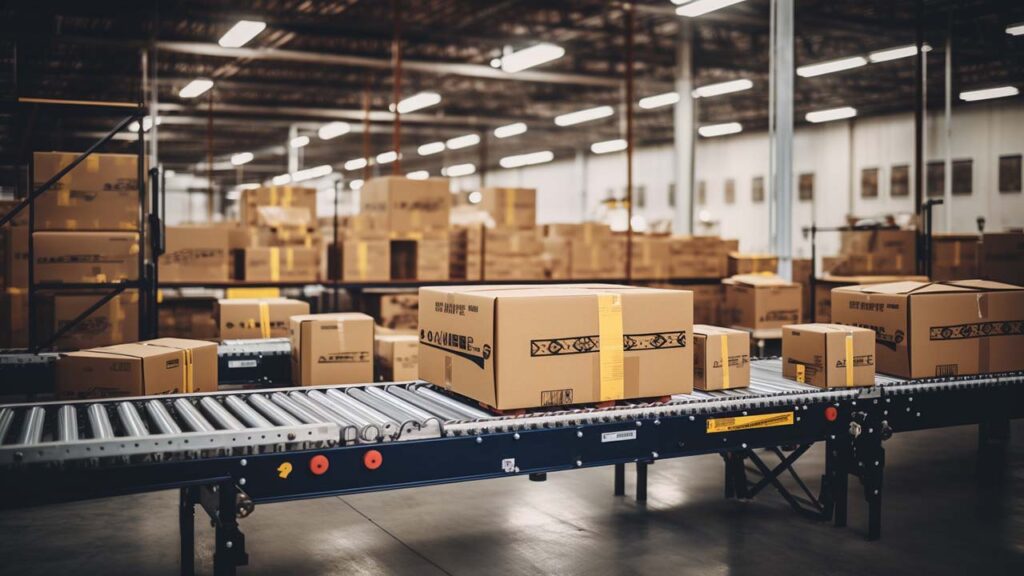
Real-World Success: How a 3PL Helped a Retailer Scale Peak Demand
A direct-to-consumer electronics brand struggled with peak season logistics. In previous years, they faced:
Stockouts during Cyber Monday, leading to a 20% revenue loss
Shipping delays, resulting in negative customer reviews
Costly storage overages, cutting into profits
After partnering with a 3PL, they implemented:
✅ Inventory distribution across 3 fulfillment centers, reducing stockouts by 85%
✅ Automated order processing, doubling their daily fulfillment capacity
✅ Carrier diversification, cutting shipping delays by 40%
As a result, the brand increased peak season revenue by 35% while improving customer experience.
The TikTok Shop Boom: By the Numbers
TikTok Shop is growing at an unprecedented rate:
- 1 Billion+ Monthly Active Users – A massive audience engaging with brands daily.
- Explosive Sales Growth – TikTok Shop is rapidly gaining traction, with billions in sales reported and projections showing continued expansion.
Influencer Marketing Powerhouse – Creators drive product discovery and conversions, giving brands unique exposure. Learn more about social commerce and fulfillment with FulfillMe.
Is Your Business Ready for Peak Season?
Surging demand should be an opportunity—not a challenge. With the right 3PL partner, businesses can scale operations, maintain fast fulfillment, and deliver exceptional customer experiences during peak seasons.
Ready to turn seasonal demand into a growth driver? Contact FulfillMe today to optimize your fulfillment strategy for success.

Norman Kravitz is a logistics and fulfillment expert with extensive experience in e-commerce supply chains, currently serving as CEO and Founder of FulfillMe, a technology-enabled 3PL provider. Beginning his career at the United States Postal Service and later leading operations at Ddu Express, he has deep expertise in freight forwarding, inventory management, and cost optimization. Norman’s strategic approach to logistics operations and e-commerce fulfillment positions him as a trusted authority in the 3PL industry.

